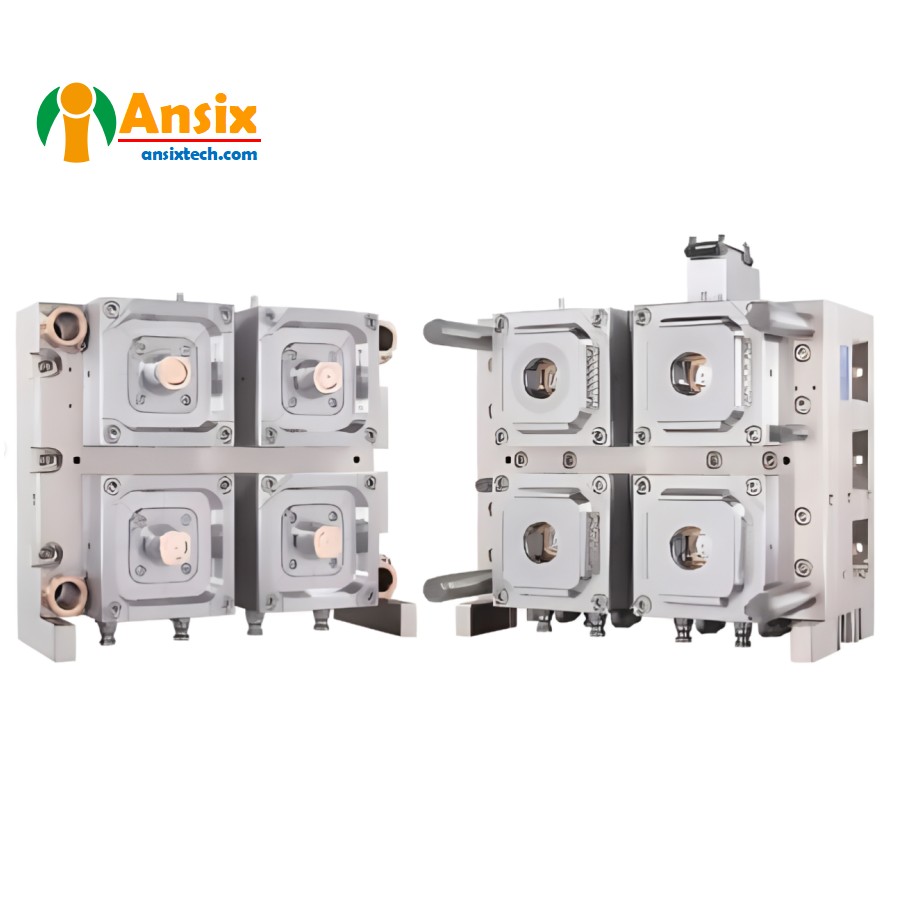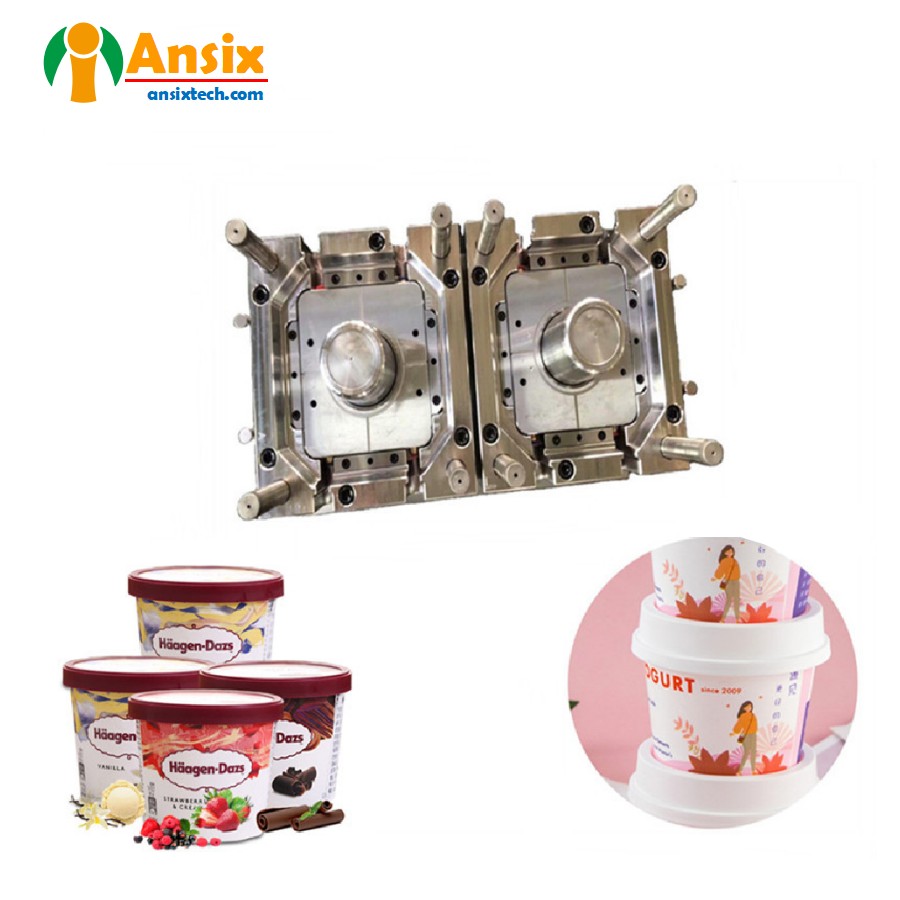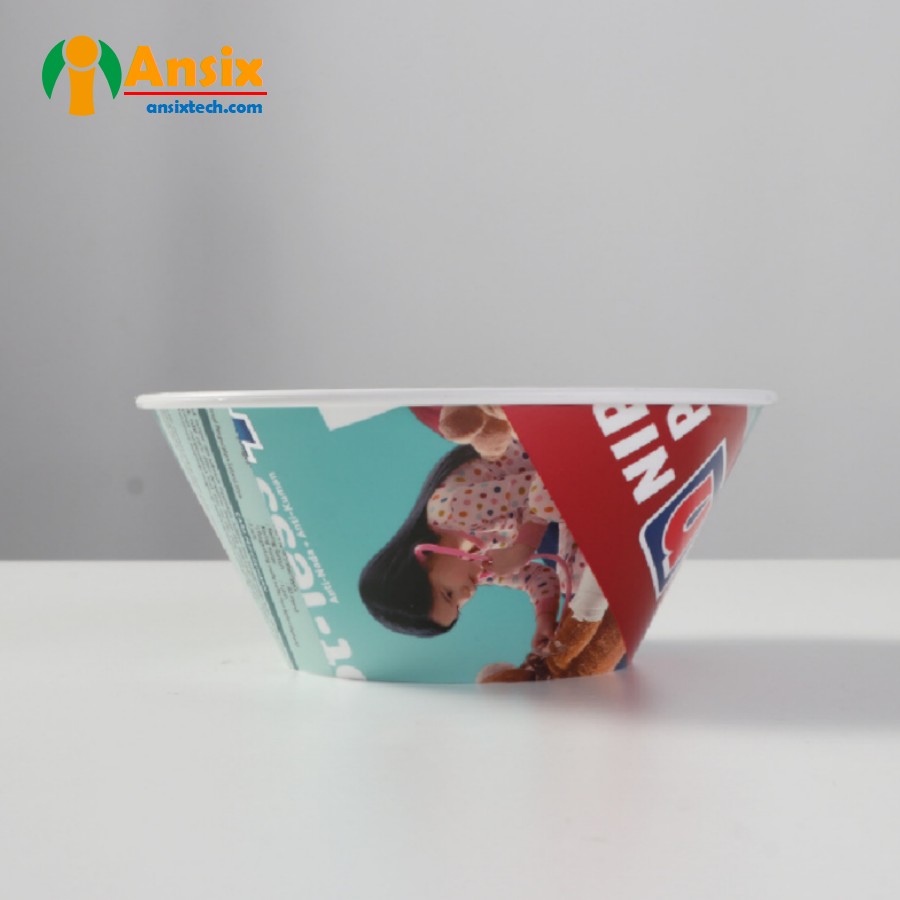In-mold labeling Mold Lunch box disposable fast food box milk tea cup disposable coffee cup tea cup
FEATURES
-
Mold Description
Product Materials:
PP
Mold Material:
2344 S136 Cr12、Cr12MoV、Cr12Mo1V1
Number of Cavities:
1*4
Glue Feeding Method:
Hot runner
Cooling Method:
Water cooling
Molding Cycle
23.5s
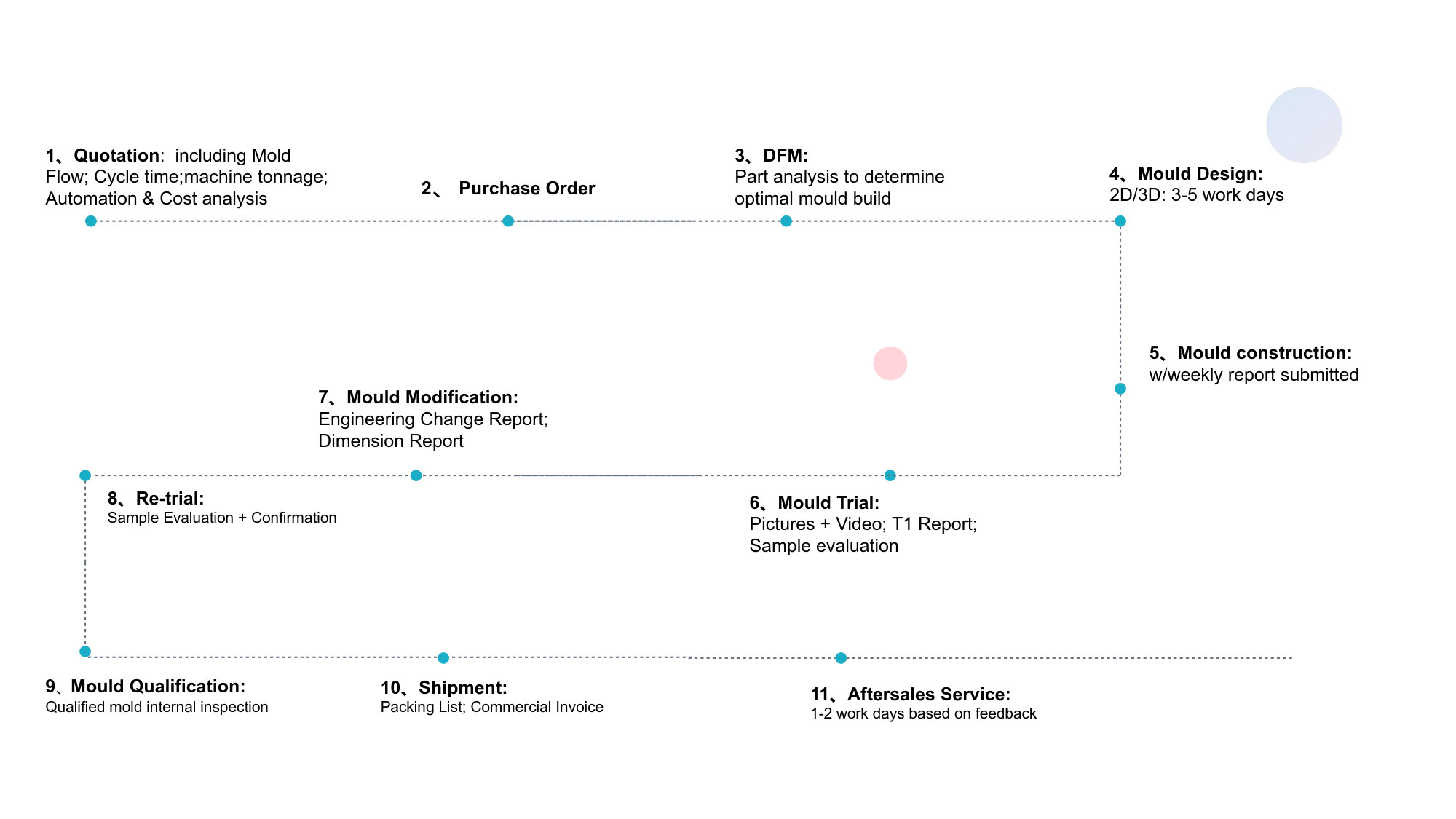
- In-mold labeling Mold Lunch box Mold flow analysis and mold designMold flow analysis and mold design for in-mold labeling of lunch boxes and lunch boxes is one of the key steps in manufacturing these products.In-mold labeling mold design:In-mold labeling molds are designed to affix labels inside the product during the injection molding process of lunch boxes and lunch boxes. During the design process, the following factors need to be considered:Label location and size: Determine the location and size of the label to ensure that the label can be fully adhered to the interior of the product.Label fixing method: Design a suitable fixing device to ensure that the label will not shift or fall off during the injection molding process.Mold structure design: Design the structure of the mold according to the shape and size of the product to ensure that the label can be accurately pasted inside the product.Mold flow analysis:Mold flow analysis is an important step in the mold design process. Through mold flow analysis, the flow of plastic during the injection molding process can be simulated to help optimize mold design and avoid defects such as bubbles, short shots, and warpage. Mold flow analysis can be carried out using professional mold flow analysis software. According to the geometry of the mold and injection molding process parameters, the flow of plastic in the mold is simulated and corresponding analysis results and suggestions are given. Through mold flow analysis, the design of the mold can be optimized to improve product quality and production efficiency.Mold design:Mold design is one of the key steps in manufacturing lunch boxes and boxes. During the design process, the following factors need to be considered:Appearance design: The appearance design of lunch boxes and lunch boxes should conform to the overall style and aesthetic requirements of the product. Factors such as the shape, curves and details of the enclosure need to be considered.Internal structure design: The internal structure design of lunch boxes and lunch boxes should consider the use function and assembly requirements of the product to ensure the stability and reliability of the product.Material selection: Choose suitable plastic materials, such as polypropylene (PP) or polystyrene (PS), to meet product usage requirements and cost control.Mold manufacturing process: According to the size and shape of the product, select the appropriate mold manufacturing process, such as CNC machining, EDM and wire cutting, etc.In summary, mold flow analysis and mold design for in-mold labeling molds for lunch boxes and lunch boxes are one of the key steps in manufacturing these products. Through reasonable mold design and mold flow analysis, lunch boxes and lunch boxes with beautiful appearance and reliable quality can be manufactured. At the same time, attention needs to be paid to material selection, processing technology, and in-mold labeling design during the mold manufacturing process to ensure the quality and durability of the mold.
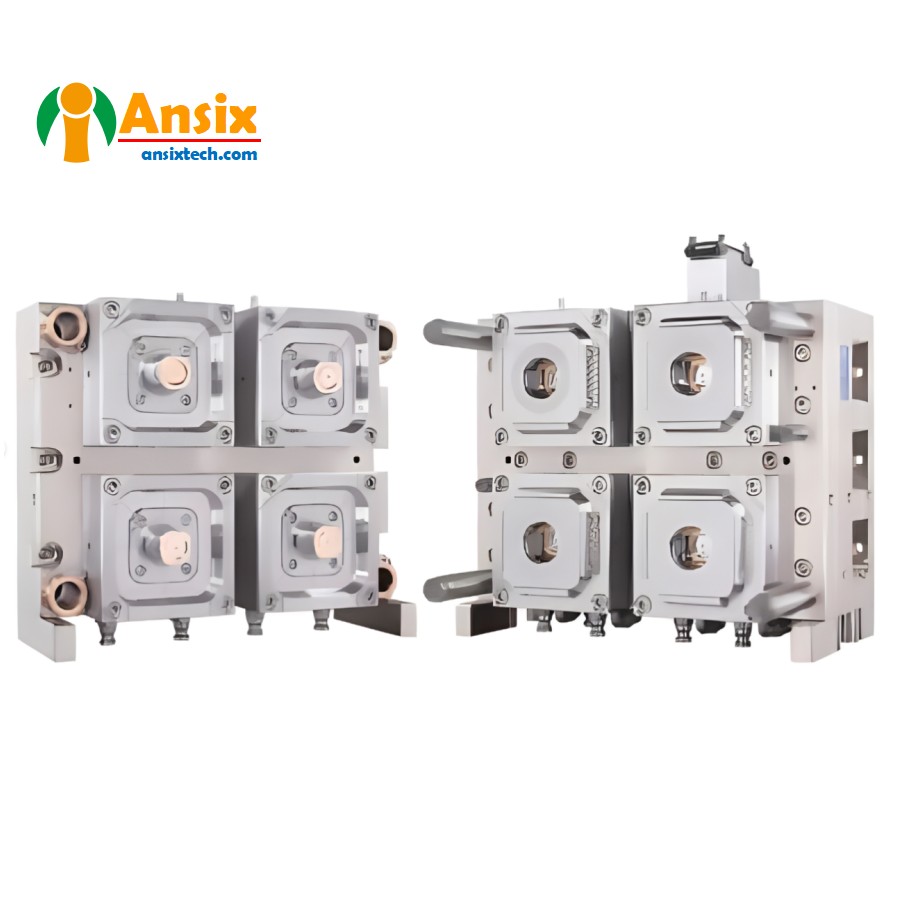
- In-mold labeling Mold Lunch box of the mold manufacturing process and product material selectionThere are some advantages and difficulties in the manufacturing and processing of in-mold labeling molds for lunch boxes and lunch boxes.Advantages:Improve production efficiency: In-mold labeling molds can realize automatic labeling during the injection molding process, improve production efficiency and reduce manual operation time.Ensure accurate labeling position: Through the reasonable design of mold design and fixtures, it is possible to ensure that the label is accurately pasted inside the product during the injection molding process, ensuring the consistency and accuracy of the labeling position.Improve product appearance quality: In-mold labeling can make the product appearance neat, prevent labels from falling off or shifting, and improve the product’s appearance quality and brand image.Reduce production costs: In-mold labeling molds can realize automatic labeling, reduce manual operations, reduce labor costs, improve production efficiency, thereby reducing production costs.Difficulties:Complex mold design: In-mold labeling mold design needs to consider multiple factors such as label position, fixtures, and injection molding processes. It is more complex than ordinary injection mold design.Label fixation stability: During the injection molding process, it is necessary to ensure that the label can be stably attached to the inside of the product to prevent the label from falling off or shifting. This puts certain requirements on the design of the fixture and mold manufacturing and processing.Injection molding process control: The injection molding process of the in-mold labeling mold needs to be precisely controlled to ensure the label’s sticking position and quality, and the injection molding parameters need to be optimized and adjusted.Regarding the selection advantages of product material PP, it is mainly reflected in the following aspects:Heat resistance: PP material has good heat resistance and can withstand use in high temperature environments. It is suitable for products that require high temperature resistance such as lunch boxes and lunch boxes.Chemical resistance: PP material has good chemical resistance and good corrosion resistance to chemicals such as acids and alkalis. It is suitable for use in food packaging and other products that need to come into contact with chemical substances.Lightweight and high strength: PP material has lower density and higher strength, which can create lightweight but strong and durable lunch boxes and lunch box products.Recyclability: PP material has good recyclability, meets environmental protection requirements, and can reduce the impact on the environment.In summary, the manufacturing and processing of in-mold labeling molds for lunch boxes and lunch boxes has some advantages and difficulties. Through reasonable mold design and manufacturing processing, automatic labeling can be achieved and production efficiency and product quality can be improved. Choosing suitable materials, such as PP materials, can meet the product’s usage requirements and environmental protection requirements.
- In-mold labeling Mold Lunch box Mass production and Quality controlThe mass production of in-mold labeling of lunch boxes and lunch boxes involves many aspects such as production efficiency, tooling fixtures, cost control and process quality assurance.Production efficiency:In order to improve production efficiency, the following measures can be taken:Automated production line: Introduce automated equipment and production lines to achieve efficient operation of automated labeling and production processes.Parallel production: Parallel production is adopted to carry out multiple processes at the same time to shorten the production cycle.Optimize process parameters: Improve production efficiency and quality by optimizing injection molding process parameters, such as injection speed, temperature control, etc.Tooling fixtures:Reasonable configuration of tooling fixtures can improve production efficiency and product quality, and reduce reliance on manual operations. The application of tooling fixtures can achieve the following functions:Automatic loading and unloading: Automatic loading and unloading is realized through automated devices, reducing manual operation time.Automatic positioning and clamping: Automatic positioning and clamping of products are achieved through automated fixtures, improving production efficiency and product consistency.Automatic detection and elimination: Automatic detection and elimination of products are realized through automated devices to improve product quality and production efficiency.Cost control:In the mass production process, cost control is required to reduce production costs. Common cost control measures include:Raw material cost control: Select appropriate raw material suppliers, conduct cost negotiation and optimization, and reduce raw material costs.Labor cost control: Optimize the production process, improve production efficiency, and reduce manual operation time and labor costs.Equipment cost control: Reasonably select equipment suppliers, control equipment procurement and maintenance costs, and reduce equipment costs.Process quality assurance:During mass production, process quality assurance is required to ensure product consistency and stability. Common quality assurance measures include:Quality control plan: Develop a quality control plan to clarify the quality requirements and control methods for each link.Inspection and testing: Conduct product inspection and testing, such as appearance inspection, dimensional measurement, functional testing, etc., to ensure that the product meets the requirements.Process monitoring: Monitor the production process, such as temperature control, injection pressure control, etc., to ensure product consistency and stability.The mass production of lunch boxes and in-mold labeling involves many aspects such as production efficiency, tooling fixtures, cost control and process quality assurance. Through reasonable measures and management, production efficiency can be improved, costs can be reduced, and product quality and stability can be ensured.


